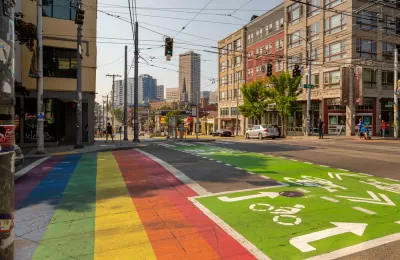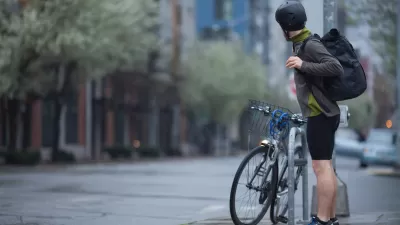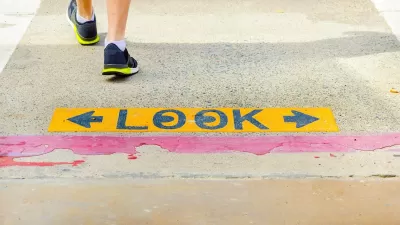The city released what it called a comprehensive review of its Vision Zero initiatives, but one critic argues the report doesn’t address some key opportunities for improving road safety.

The Urbanist’s Ryan Packer dissects the Seattle Department of Transportation (SDOT)’s recently released review of the city’s Vision Zero program. Although the city touted the report as a ‘top-to-bottom’ assessment, Packer argues that it only ‘skims the surface.’ In fact, “It focuses on a relatively narrow range of projects where the department was able to make progress on safety, and not on two larger categories: opportunities where safety improvements were ineffective, and opportunities where safety improvement were not included at all.”
“Despite all SDOT presentations starting with a rundown of the department’s vision and values, with safety near the top of the list, the report confirms many things stand in the way of safety improvements becoming fully embedded in everything that happens at the department.”
Packer details the report’s findings, which, for one, “offer a big opportunity for the general public to finally see what barriers exist to fully incorporating safety upgrades in the department’s daily work.” But Packer criticizes the report’s omission of unsuccessful projects and strategies, which could offer valuable lessons for the future.
Nevertheless, the report provides a “tidy list” of actions that SDOT may soon internalize, Packer hopes. The success of ‘rapid response’ interventions such as temporary bike lanes and safety improvements in the last year point to a way forward, if they can serve as models for broader action. Ultimately, Packer concludes, “any strategies are only going to be effective if local leaders allow SDOT to try bold things, and not reserve safety treatments to only the instances where there’s little pushback.”
FULL STORY: SDOT’s Top to Bottom Review of Vision Zero Barely Skims the Surface

Alabama: Trump Terminates Settlements for Black Communities Harmed By Raw Sewage
Trump deemed the landmark civil rights agreement “illegal DEI and environmental justice policy.”

Planetizen Federal Action Tracker
A weekly monitor of how Trump’s orders and actions are impacting planners and planning in America.

Why Should We Subsidize Public Transportation?
Many public transit agencies face financial stress due to rising costs, declining fare revenue, and declining subsidies. Transit advocates must provide a strong business case for increasing public transit funding.

Understanding Road Diets
An explainer from Momentum highlights the advantages of reducing vehicle lanes in favor of more bike, transit, and pedestrian infrastructure.

New California Law Regulates Warehouse Pollution
A new law tightens building and emissions regulations for large distribution warehouses to mitigate air pollution and traffic in surrounding communities.

Phoenix Announces Opening Date for Light Rail Extension
The South Central extension will connect South Phoenix to downtown and other major hubs starting on June 7.
Urban Design for Planners 1: Software Tools
This six-course series explores essential urban design concepts using open source software and equips planners with the tools they need to participate fully in the urban design process.
Planning for Universal Design
Learn the tools for implementing Universal Design in planning regulations.
Caltrans
Smith Gee Studio
Institute for Housing and Urban Development Studies (IHS)
City of Grandview
Harvard GSD Executive Education
Toledo-Lucas County Plan Commissions
Salt Lake City
NYU Wagner Graduate School of Public Service





























